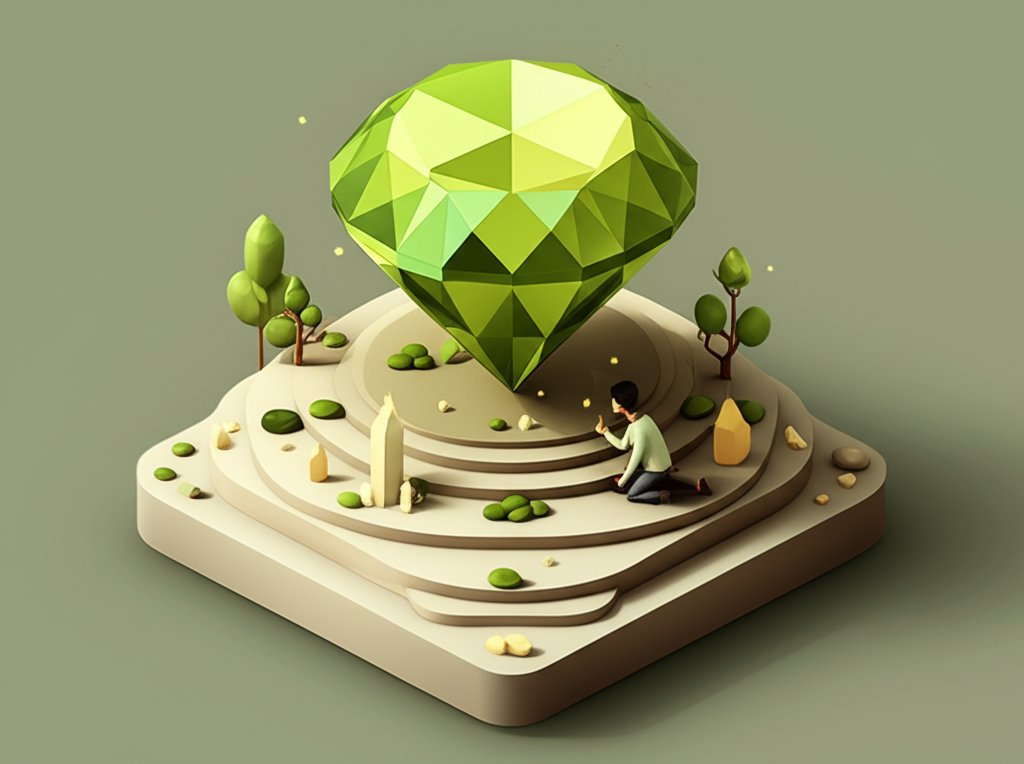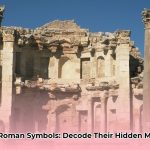Welcome, gem aficionados and curious minds! Prepare to dive deep into the luminous world of peridot, a captivating gemstone known for its vibrant green hue and rich history. Often called the “Gem of the Sun” or “Evening Emerald,” this enchanting mineral holds secrets spanning from the Earth’s fiery mantle to the far reaches of outer space. If you’re searching for facts about peridot, eager to understand what makes this peridot gemstone so unique, or simply craving comprehensive peridot facts, you’ve come to the definitive guide.
In this article, we’ll reveal the essential secrets of peridot, exploring its extraordinary origins, fascinating lore, unique properties, and practical insights that make it a truly remarkable jewel. Get ready to embark on a journey that will illuminate every facet of this spectacular green gem, leaving no question unanswered and equipping you with expert knowledge to truly appreciate its profound beauty and rich legacy.
The Verdant Allure of Peridot: A Gemstone Defined
Peridot stands out in the vast spectrum of precious stones, celebrated for its distinctive green. But what exactly is peridot, and what gives it its characteristic charm? Let’s delve into the fundamental peridot facts that define this remarkable gem.
What is Peridot? Unpacking the Olivine Connection
At its core, peridot is the gem-quality variety of the mineral olivine. Olivine itself is a common silicate mineral, but only a fraction of it boasts the clarity, color, and size required to be classified as a gemstone. Chemically, peridot is an iron magnesium silicate, with its signature green color resulting directly from the presence of iron within its crystal structure. Unlike many other green gemstones, peridot’s color is inherent to its composition, rather than being caused by trace impurities. This makes it an idiochromatic gem.
The varying proportions of iron determine the intensity and shade of green, ranging from a pale, yellowish-green to a rich, intense olive green, and sometimes even a brownish-green. Understanding its olivine foundation is crucial for grasping its geological origins and unique characteristics.
The Distinctive Green: Peridot’s Unique Color Spectrum
While many gemstones display a spectrum of colors, peridot is almost exclusively green. Its palette spans from a vivid lime green to a deep, luscious olive, often with a subtle golden undertone. The most highly prized peridot exhibits a pure, vibrant grass-green color without any brownish or yellowish modifiers. This specific hue is considered the pinnacle of peridot’s beauty and significantly impacts its value.
The intensity of its green is directly linked to the amount of iron present. Higher iron content generally leads to a darker, more saturated green. This intrinsic coloration sets it apart from other green gems like emeralds, which often owe their color to chromium or vanadium. The distinct glow of peridot is truly captivating under various lighting conditions, making it a versatile gem for any occasion. These specific facts about peridot regarding its color are essential for distinguishing it and appreciating its natural beauty.
“Gem of the Sun” and “Evening Emerald”: Unraveling the Ancient Monikers
Throughout history, peridot has been adorned with poetic names that hint at its unique visual properties. The ancient Egyptians, who extensively mined peridot, affectionately called it the “Gem of the Sun,” believing it captured the radiant energy of their revered celestial deity. This moniker also reflects its sunny, often yellowish-green glow.
The Romans, observing its ability to retain its vibrant color even in dim light, bestowed upon it the title “Evening Emerald.” While emeralds tend to appear dull or even black in low-light conditions, the peridot gemstone continues to shimmer with a captivating brilliance under candlelight or moonlight. This remarkable optical phenomenon made it a favorite for evening wear and has contributed to its mystique for centuries. It’s important to note, however, that while a flattering comparison, peridot is a distinct mineral species from emerald (beryl), each deserving recognition for its own unique qualities. These historical peridot facts highlight its ancient appeal and perceived magical attributes.
Peridot’s Place Among Gemstones: Rarity, Beauty, and Durability
As a gemstone, peridot holds a respected position in the mineral world. While not as rare as some of the “Big Four” (diamond, ruby, sapphire, emerald), high-quality, large peridot specimens are indeed uncommon and highly sought after. Its beauty lies in its distinctive color, often described as cheerful and refreshing, evoking images of lush landscapes.
In terms of durability, peridot registers between 6.5 and 7 on the Mohs scale of mineral hardness. This makes it suitable for most types of jewelry, though it should be worn with some care, especially in rings or bracelets that may be exposed to harder impacts. It is more susceptible to scratching than harder gems like sapphire or diamond. Despite this moderate hardness, its enduring appeal through millennia attests to its practical resilience when properly cared for, cementing its status as a cherished peridot gemstone.
Deep Earth, Deep Space: The Extraordinary Origins of Peridot

The formation story of the peridot gemstone is unlike almost any other. While most gemstones form in the Earth’s crust, peridot originates from profound depths, and even beyond our planet! These extraordinary facts about peridot contribute significantly to its allure.
Born of Fire: Peridot’s Volcanic Formation
One of the most fascinating peridot facts is its subterranean genesis. Unlike many other minerals that crystallize in the Earth’s continental crust, peridot forms deep within the Earth’s mantle, at depths ranging from 20 to 90 miles. This is the only gemstone that forms directly within this layer, a testament to its fiery origins.
It is brought to the surface through intense volcanic activity. As magma erupts from volcanoes, carrying with it fragments of the mantle, these peridot crystals are eventually released from their basaltic host rock by weathering processes. The magnificent vibrant green hues we admire are a direct result of this tumultuous journey from the Earth’s molten heart to its surface, making each peridot gemstone a true “treasure from the depths.” This unique formation process adds a layer of geological wonder to every piece of peridot jewelry.
From the Heavens: Extraterrestrial Peridot in Meteorites and Comets
Perhaps the most astonishing peridot facts relate to its extraterrestrial origins. Peridot is one of the few gemstones known to form outside of Earth! It has been discovered in pallasite meteorites, a rare type of stony-iron meteorite believed to be remnants from the formation of our solar system. These alien peridot crystals, sometimes large enough to be cut into stunning gems, offer a breathtaking connection to the cosmos. Imagine wearing a piece of jewelry that truly came from the stars!
Furthermore, in 2005, the Stardust robotic space probe brought back samples of comet dust from the comet Wild 2, and among the dust particles, scientists identified tiny grains of olivine – peridot’s mineral family. This cosmic connection reinforces peridot’s status as a truly “extreme gem,” bridging the gap between our planet and the boundless wonders of the universe. This unique aspect profoundly elevates the appeal of the peridot gemstone.
Prime Mining Locations: Where the World’s Finest Peridot is Found
The distribution of fine peridot gemstone deposits is global, but a few locations stand out for their historical significance or current production volume.
- Zabargad Island (St. John’s Island), Egypt: This small, remote island in the Red Sea is considered the oldest historically documented source of peridot, with mining dating back an astounding 3,500 years to ancient Egyptian times (around 1500 BC). For centuries, it was the primary source of the world’s finest peridot, often yielding large, intensely colored crystals. Many historical peridots in museum collections today originated from Zabargad.
- Arizona, USA: Today, the San Carlos Apache Indian Reservation in Arizona is the most significant source of peridot globally, producing a vast majority of the world’s supply. The region is known for its abundant, though often smaller, yellowish-green peridot crystals found within volcanic basalt.
- Myanmar (Burma): Mogok, Myanmar, a region famous for its rubies, also produces some of the most beautiful and intensely colored peridot. These deep-green “Burmese Peridot” specimens are highly prized for their exceptional quality and vibrant hue.
- Pakistan: The Himalayan region of Pakistan, particularly the Kohistan area, has yielded remarkable large, high-quality peridot crystals since the 1990s. These are often celebrated for their attractive color and size.
- Vietnam: Like Myanmar, Vietnam’s Luc Yen region has also produced fine peridot, sometimes with a slightly more yellowish-green tone.
- Other Noteworthy Sources: Peridot is also mined in countries such as China, Brazil, Ethiopia, Norway, Australia, Mexico, and Tanzania, each contributing to the diverse global supply of this radiant gemstone.
These diverse origins underscore the global appeal and accessibility of peridot, making it a widely available yet historically significant gem.
A Tapestry of Time: Peridot’s Rich History, Lore, and Symbolism
The history of the peridot gemstone is interwoven with ancient civilizations, powerful deities, and enduring beliefs. These captivating peridot facts reveal its deep cultural significance across millennia.
Ancient Civilizations and Their Peridot: Egyptians, Romans, and Beyond
As one of the oldest known gemstones, peridot’s journey through human history is long and illustrious.
- Ancient Egypt: As mentioned, the Egyptians were the first major cultivators of peridot, mining it from Zabargad Island. They believed it to be the “Gem of the Sun,” capable of dispelling evil and bringing light, joy, and prosperity. Cleopatra herself was rumored to have amassed a collection of stunning green jewels, many of which were likely peridot, though she often believed them to be emeralds.
- Roman Empire: The Romans cherished peridot, dubbing it the “Evening Emerald” for its unique ability to glow under artificial light. They also associated it with the power of the sun, believing it offered protection against the terrors of the night.
- Medieval Europe: During the Crusades, peridot was brought to Europe by knights who discovered it in the Middle East. It quickly found its way into ecclesiastical treasures and royal collections, often adorning churches and important religious artifacts. Many medieval churches, including Cologne Cathedral, feature peridot that was mistaken for emeralds for centuries.
- Ottoman Empire: The Ottoman Sultans were fond of peridot, using it extensively in their imperial jewelry and decorative objects. Large, exquisite peridot gems adorned their turbans and ceremonial attire, symbolizing power and prestige.
This extensive history demonstrates the enduring value and fascination humans have held for the peridot gemstone.
The Tears of Pele: Peridot’s Hawaiian Spiritual Connection
In Hawaiian culture, peridot takes on a deeply spiritual and mythical significance, tying directly into the raw power of nature. Legend has it that the shimmering green gems found on Hawaii’s volcanic beaches are the “Tears of Pele,” the formidable goddess of fire, volcanoes, lightning, and wind.
According to ancient folklore, these precious fragments of peridot are formed when Pele’s tears, shed in moments of both sorrow and creation, mix with volcanic ash and lava, solidifying into the beautiful green crystals. This powerful symbolism connects peridot directly to the elemental forces of the Earth, representing both the destructive and creative aspects of the goddess. For Hawaiians, to find a piece of peridot is to receive a personal gift from Pele, bringing luck and protection. This profound association makes peridot facts particularly resonant for those who value a spiritual connection to nature and the Earth’s fiery soul.
Peridot as a Talisman: Protection, Prosperity, and Healing Beliefs
Throughout history and across various cultures, peridot has been revered not just for its beauty but also for its perceived metaphysical properties. Many peridot facts relate to its role as a powerful talisman.
- Protection: Ancient civilizations widely believed peridot possessed strong protective qualities, particularly against evil spirits, negative energies, and bad luck. It was often set in gold to enhance its power and worn as amulets or talismans to ward off nightmares, illusions, and even enchantments. Sailors, fearing the vast, unpredictable ocean, sometimes carried peridot for good fortune and safe passage.
- Prosperity and Abundance: As a “Gem of the Sun” and with its vibrant green hue, peridot became associated with growth, vitality, and renewal. It was thought to attract wealth, foster success, and bring general abundance to the wearer. Its cheerful color was also believed to enhance feelings of happiness and well-being.
- Healing: In ancient medicine, peridot was used to alleviate various physical ailments. It was believed to aid digestion, promote healing of the liver and gallbladder, and improve overall physical health. Emotionally, it was thought to soothe anger and jealousy, reduce stress, and promote inner peace and emotional balance. Its gentle energy was also attributed to strengthening relationships and encouraging open communication.
These rich beliefs surrounding the peridot gemstone continue to influence its appeal, especially in alternative healing and spiritual practices today.
The August Birthstone and 15th Anniversary Gemstone
For those born in the vibrant month of August, peridot is your official birthstone, symbolizing strength, vitality, and beauty. Its cheerful green complements the warmth of late summer and early autumn birthdays. Wearing peridot is believed to bring good fortune and a zest for life to August-born individuals.
Beyond birth month affiliations, peridot also holds a special place in marital celebrations, serving as the traditional gemstone for the 15th wedding anniversary. This milestone represents a decade and a half of enduring love, growth, and commitment. Gifting peridot for this anniversary symbolizes the flourishing nature of the relationship, the continued renewal of vows, and the hope for lasting prosperity together. These modern peridot facts ensure its continued relevance and cherished status in personal milestones.
Unveiling Peridot’s Secrets: Properties, Quality, and Care
To truly appreciate the peridot gemstone, it’s essential to understand its scientific properties, how its quality is judged, and the best practices for its care.
Physical and Chemical Properties: What Makes Peridot Unique
Delving into the scientific attributes of peridot reveals the specific peridot facts that contribute to its character and beauty.
- Mineral Family: Peridot belongs to the olivine group, a neosilicate mineral. Its chemical formula is (Mg,Fe)2SiO4, indicating a solid solution series between forsterite (magnesium-rich) and fayalite (iron-rich). Gem-quality peridot typically falls closer to the forsterite end, with sufficient iron to give it color.
- Crystal System: Orthorhombic. Peridot crystals typically form in prisms, often with striations.
- Hardness: 6.5 to 7 on the Mohs scale. This relatively good hardness means it can resist scratching from common items, but it’s softer than quartz or topaz, so care is needed.
- Specific Gravity: 3.27–3.48. This density is relatively high, meaning a peridot will feel heavier than other gems of the same size.
- Refractive Index: 1.650–1.690. This moderate refractive index contributes to its brilliance.
- Luster: Vitreous (glassy).
- Cleavage: Poor to distinct in two directions. This means it can break along certain planes if struck sharply, making it somewhat brittle.
- Distinctive Double Refraction: One of peridot’s most unique optical properties is its strong double refraction (birefringence). If you look closely through a faceted peridot, especially a larger one, you might notice a slight doubling of the facet edges and inclusions. This “seeing double” effect is a tell-tale sign of peridot and adds to its internal fire and sparkle.
- Stability: Peridot is generally stable to light and heat, but it can be affected by rapid temperature changes, which may cause it to fracture. It is also susceptible to certain acids, so contact with household chemicals should be avoided.
These scientific peridot facts offer a deeper understanding of this fascinating gemstone.
Evaluating Peridot Quality: The 4 Cs Explained
Like diamonds and other precious stones, the quality and value of a peridot gemstone are assessed using the “4 Cs”: Color, Clarity, Cut, and Carat Weight.
- Color: This is the most crucial factor for peridot. The most desirable color is a pure, intense grass-green, sometimes described as “bottle green” or “lime green,” with little to no yellowish or brownish modifiers. Highly saturated greens command the highest prices. Too pale or too yellowish, and the value decreases.
- Clarity: Most gem-quality peridot is eye-clean, meaning it has no inclusions visible to the naked eye. Internal fractures (feather-like inclusions) or dark mineral crystals can reduce its value. Highly transparent stones are preferred.
- Cut: A well-cut peridot will maximize its brilliance and color. Due to its strong double refraction, skilled cutting is essential to ensure light reflects optimally from within the stone, enhancing its sparkle and avoiding a dull or “windowed” appearance. Common cuts include ovals, rounds, cushions, emerald cuts, and pendeloques.
- Carat Weight: As with most gemstones, larger peridot specimens of high quality are rarer and thus more valuable. Peridot can be found in a wide range of sizes, from small accent stones to impressive multi-carat centerpieces. While an abundance of small pieces come from Arizona, larger, finer examples often hail from Myanmar or Pakistan.
Understanding these quality factors allows consumers to make informed choices when selecting a peridot gemstone, ensuring they acquire a piece that matches their preferences and budget.
Caring for Your Peridot Gemstone: Tips for Longevity
While a beautiful gemstone, peridot requires a degree of care to maintain its luster and prevent damage. Its moderate hardness and susceptibility to certain conditions mean careful handling is key.
- Cleaning: The safest and most effective way to clean peridot jewelry is with warm, soapy water and a soft brush (like a soft toothbrush). Rinse thoroughly under clean running water and dry with a soft, lint-free cloth.
- Avoid Harsh Chemicals: Peridot can be reactive to acids, even mild ones. Steer clear of household cleaners, strong detergents, and pool chemicals, which can etch its surface or damage its polish. Remove peridot jewelry before swimming, cleaning, or gardening.
- Temperature Sensitivity: Peridot is sensitive to sudden and extreme temperature changes, which can cause internal fractures. Avoid exposing it to very hot water or extreme cold quickly.
- Ultrasonic and Steam Cleaners: Generally, ultrasonic cleaners are not recommended for peridot, especially if the stone has inclusions or existing fractures, as the vibrations can exacerbate these issues. Steam cleaning is also not advised due to the risk of thermal shock.
- Storage: Store peridot jewelry separately from harder gemstones (like diamonds or sapphires) to prevent scratches. A soft pouch or a separate compartment in a jewelry box is ideal.
- Wearing Guidelines: While suitable for daily wear, it’s wise to remove peridot rings or bracelets during strenuous activities or when there’s a risk of impact, as it can chip or scratch more easily than harder gems.
By following these simple care facts about peridot, you can ensure your beautiful peridot gemstone remains vibrant and cherished for generations.
Identifying Peridot: Distinguishing it from Look-Alikes
Due to its green color, peridot has often been confused with other green gemstones throughout history. Understanding key peridot facts helps in distinguishing it:
- Emerald: The most common confusion. Emeralds are typically a deeper, bluer green, often with more visible inclusions (“jardin”). Peridot, on the other hand, is usually a yellowish-green to olive green and often eye-clean. The “Evening Emerald” moniker is historical, but they are chemically distinct.
- Green Tourmaline: Green tourmaline can also have similar shades, but its double refraction is usually less pronounced than peridot’s. Tourmaline often exhibits strong pleochroism (appearing different colors when viewed from different angles), which is less common or pronounced in peridot.
- Green Garnet (e.g., Demantoid, Tsavorite): These garnets possess superior fire and brilliance compared to peridot. While their greens can be striking, their optical properties and typically higher density differentiate them.
- Man-Made Imitations: Glass, synthetic spinel, or even cubic zirconia can be dyed green to imitate peridot. However, these imitations lack the natural inclusions, specific gravity, and unique refractive properties of genuine peridot. A professional gemologist can easily differentiate these.
Knowing these distinctions is vital for both collectors and consumers to ensure the authenticity of their peridot gemstone.
Peridot in Modern Life: From Jewelry Design to Metaphysical Practices

The enduring appeal of the peridot gemstone extends into contemporary fashion and ancient spiritual traditions, making it a versatile and meaningful choice for many.
Peridot Jewelry: Timeless Designs and Contemporary Trends
The vibrant green of peridot makes it a versatile gemstone for a wide array of jewelry designs, from classic solitaires to avant-garde creations.
- Classic Settings: Peridot shines beautifully in traditional settings, often paired with yellow gold which complements its warm, yellowish-green tones. White gold or platinum can offer a striking contrast, making the green pop. Rings, earrings, pendants, and bracelets are popular choices, suitable for both everyday wear and special occasions.
- Vintage & Antique Appeal: Given its long history, peridot is frequently found in antique and vintage jewelry pieces, particularly from the Victorian, Edwardian, and Art Deco eras. Its enduring popularity in these periods speaks to its timeless charm.
- Modern Interpretations: Contemporary designers often use peridot in innovative ways, incorporating it into minimalist designs, cluster settings, or alongside other colored gemstones for a vibrant mosaic effect. Its relative affordability compared to emeralds makes it an excellent choice for larger, more impactful statement pieces.
- Fashion Versatility: Peridot’s refreshing green hue makes it a favorite for spring and summer collections, though its deep olive tones transition beautifully into autumn and winter. It pairs well with both casual attire and formal wear, injecting a natural elegance into any ensemble.
- Birthstone & Anniversary Gifts: As the August birthstone and 15th anniversary gem, peridot jewelry remains a highly sought-after gift, imbuing personal significance into each piece.
The adaptability of the peridot gemstone ensures its continued presence in both traditional and cutting-edge jewelry fashion.
Peridot’s Metaphysical and Healing Properties: Ancient Wisdom in Modern Times
Beyond its aesthetic appeal, many people continue to seek out peridot for its believed metaphysical and healing properties, echoing the ancient peridot facts and lore.










